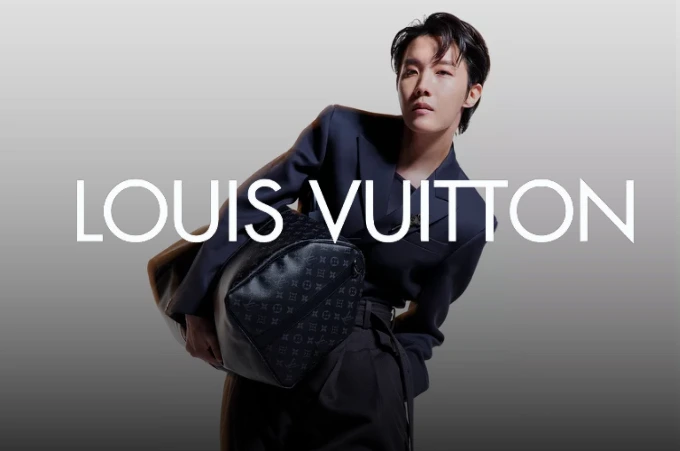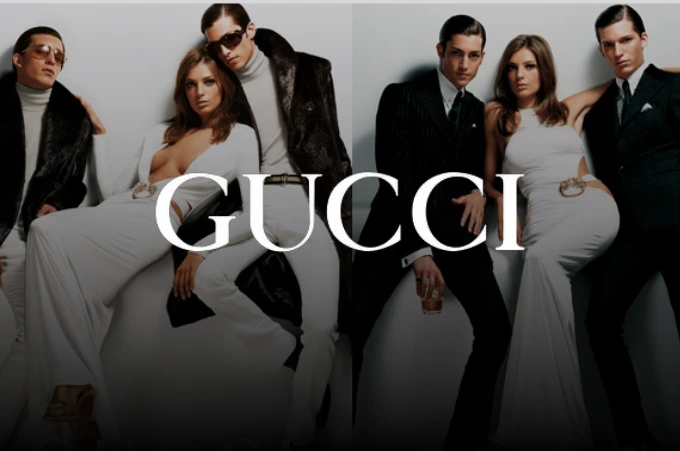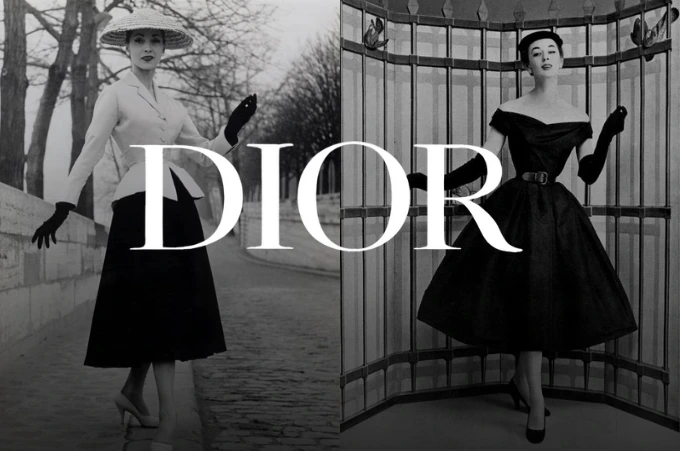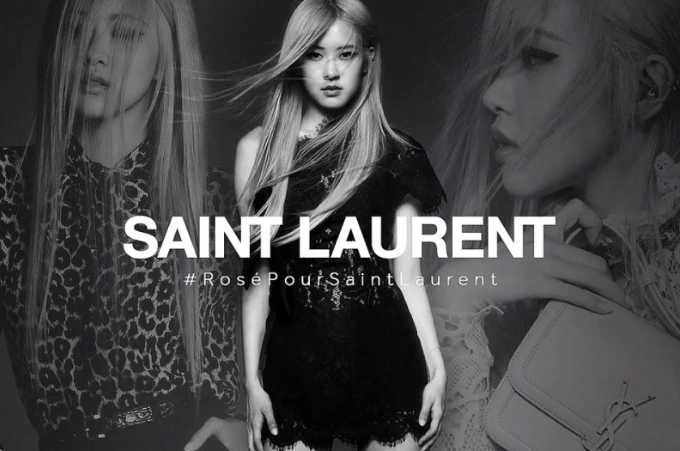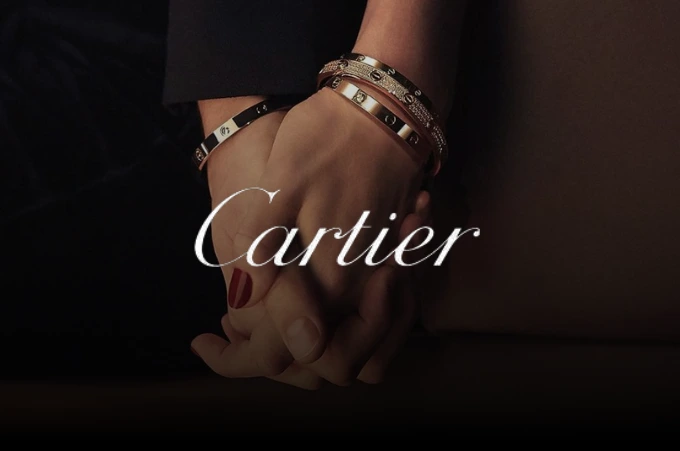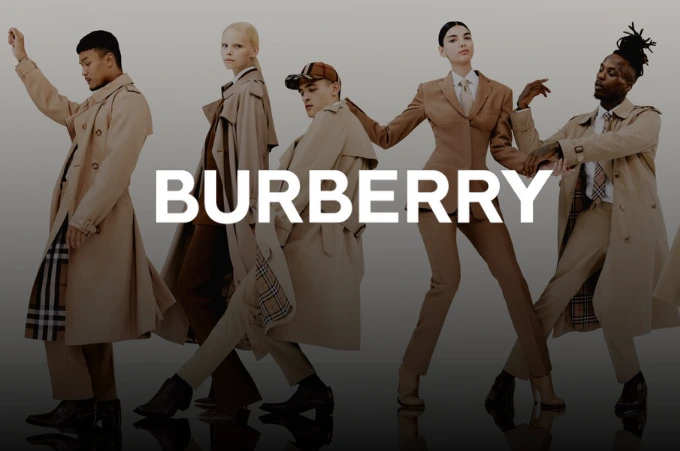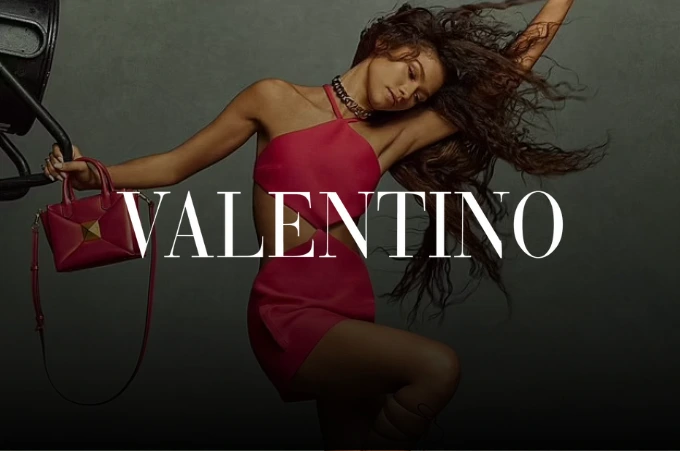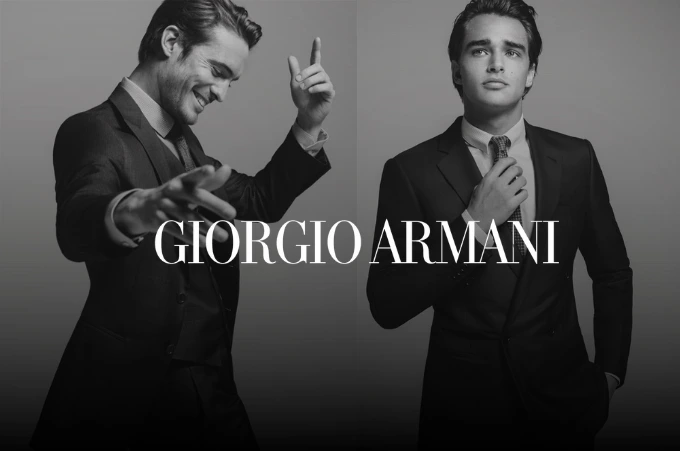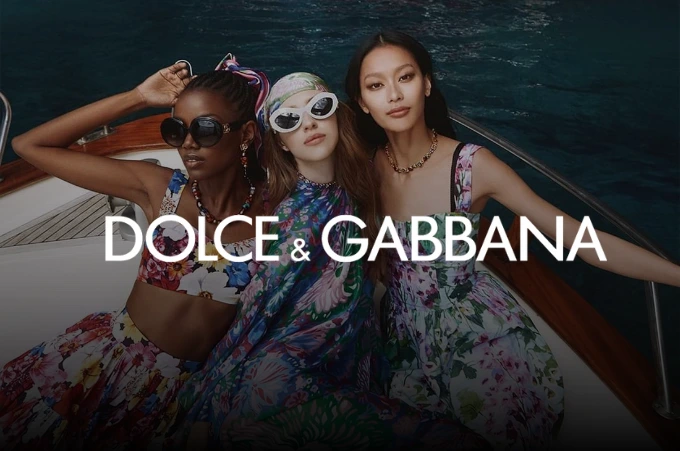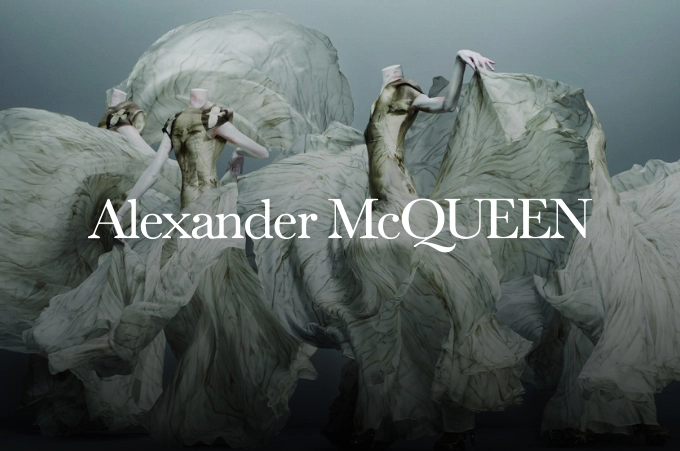High Fashion 101: The Top 20 Luxury Fashion Brands in the World
Introduction
Luxury fashion is a highly competitive and ever-evolving industry. It’s no secret that the global market for luxury goods is on the rise, and consumers are increasingly willing to invest in high-quality, exclusive, and well-crafted products. From high-end fashion houses to niche brands, the industry offers a plethora of choices that cater to different tastes, styles, and budgets.
Throughout the years, the industry has seen significant changes in consumer behavior and market trends. However, the following brands have managed to stay relevant and maintain their position as the top players in the luxury fashion industry.
In this blog, we’ll be exploring some interesting facts about these brands, including their history, signature products, and unique selling points. Whether you are a fashion enthusiast, a retailer, or a business owner, this blog will provide you with valuable insights into the luxury fashion industry and the brands that dominate it.
So, sit back, relax, and let's dive into the world of luxury fashion!
1. CHANEL

Chanel is a brand with a legacy etched in fashion history. Some of its iconic designs include the little black dress, Chanel No. 5 perfume, Chanel 2.55 bag, tweed outfits, pearl necklaces, and ballet flats. Coco Chanel, a legendary designer, revolutionized women’s fashion by introducing shoulder bags and yachting pants over 100 years ago. Her goal was to create more comfortable, masculine clothing that did not require corsets.
Building on Coco’s legacy, Karl Lagerfeld modernized her original designs in the ’80s and reintroduced them, leveraging Chanel’s heritage and brand elements into new designs like the interlocking CC logo on belts and pearl jewelry, mixing tweed with grunge style. This strategy saved Chanel from financial ruin.
Exclusivity, value-based marketing, and legacy are some of the key factors that have made Chanel a $13.2 billion (about $41 per person in the US) brand. Chanel has been successful in maintaining its position in the luxury fashion market through its heritage designs, attention to detail, and the unique experiences that it offers to its customers. The brand’s commitment to quality and exclusivity has created a loyal following among fashion-conscious consumers who appreciate the brand’s rich history and iconic designs.
2. LOUIS VUITTON

Louis Vuitton, part of the LVMH group, the world’s largest luxury conglomerate that also owns Dior, Fendi, Givenchy, Tiffany, and 75 other brands, is one of the most counterfeited brands in the world. This is mainly due to its iconic designs that have remained relatively unchanged over the 167 years, limited supply, and a strict “NO SALE” policy. Despite the challenges posed by Covid, LV reported increased revenue in Q3 of 2020, thanks to its domination in China, Japan, and Korea – the world’s biggest luxury goods markets.
Louis Vuitton has always been trendy, attracting young consumers by diversifying into streetwear and implementing a drop model where collections are released with limited stock and time without prior notice. The brand also uses endorsement deals with the biggest names in Asia, such as Mulan’s Liu Yifei, Squid Game’s Jung Ho-Yeon, tennis player Naomi Osaka, and BTS.
Through these strategies, Louis Vuitton continues to remain relevant and popular, especially among younger generations. The brand’s dominance in the luxury goods market is set to continue as it continues to diversify and expand into new markets.
3. GUCCI

Gucci, founded in Florence in 1912, is currently the second most valuable brand in the world. Although Gucci initially focused on manufacturing luxury bags, such as the famous Gucci bamboo bag, canvas suitcase, and The Jackie, they only began making clothing in 1968. Unfortunately, under Maurizio Gucci’s leadership, the brand almost went bankrupt.
However, in 1994, Tom Ford joined Gucci and transformed the brand into a major player in luxury fashion. The famous ’95 Fall collection and hypersexual brand image gave new meaning to the phrase “Sex sells.” Today, Gucci remains a favorite among Gen Z and millennials, who make up a predicted 40% of the luxury market by 2035.
Gucci strategically stays at the forefront of pop culture, with everyone from actor Xiao Zhan and K-pop idols IU and Kai to Harry Styles seen sporting the brand. As influencers continue to love logomania, Gucci will continue to dominate the luxury fashion market.
4. PRADA

Founded in 1913 by Mario Prada, the brand initially started as a small leather goods store in Milan. However, it wasn’t until the 1980s that Prada became a household name in the fashion world, thanks to Miuccia Prada, Mario’s granddaughter, who took over the family business and transformed it into a global fashion powerhouse.
Prada has a strong presence in the luxury retail market with products, including clothing, bags, shoes, and accessories, which are sold through its own stores, as well as through high-end department stores and boutiques. Prada’s ability to create a consistent brand identity and maintain a high level of quality across its product lines has contributed to its success and longevity in the industry.
In recent years, the brand has made significant efforts to reduce its carbon footprint and promote eco-friendly practices. For example, Prada has launched a sustainable line of nylon products, made from recycled materials, and has implemented energy-saving measures in its stores and factories.
5. DIOR

Christian Dior is undoubtedly one of the most celebrated fashion designers in history, and his brand, Dior, is a testament to his legacy. His “New Look” collection in the 1940s and 1950s revolutionized the fashion industry and marked a significant turning point in the history of fashion. Since then, Dior has become a household name, synonymous with luxury, glamour, and sophistication.
One of the key strategies that Dior employs to reinforce its brand image and legacy is through ambitious exhibitions that showcase its history and heritage. The recent Christian Dior: Designer of Dreams exhibition in New York City was a resounding success, attracting thousands of visitors who were captivated by the brand’s rich history and iconic designs. Similar exhibitions like Esprit Dior and the 2019 New Look Revolution in London have also been highly successful, with almost 600,000 people attending the latter.
Apart from its exhibitions, Dior’s success can also be attributed to its strong presence on social media. With 45 million Instagram followers and 1 billion views on its WeChat hashtag challenge, Dior is a powerhouse when it comes to social media marketing. It was also ranked No.1 on Launchmetrics’ media impact value list, further demonstrating the brand’s influence and reach.
In addition to its fashion line, Dior has also been highly successful in the beauty industry, with its cosmetic line being a major contributing factor to the brand’s overall success. With a focus on high-quality products and innovative packaging, Dior’s beauty line has become a must-have for many consumers around the world.
6. HERMÈS

The iconic Hermès brand is known for its luxurious and exclusive bags, such as the famous Birkin and Kelly bags. These bags have become a status symbol, with their resale value being 10 times that of gold, and their acquisition considered a sign of having “made it.” Hermès employs unique marketing tactics to maintain its prestige, such as word-of-mouth and exclusivity, as well as naming bags after famous celebrities like Grace Kelly and Jane Birkin.
The brand limits the production of these bags and keeps the numbers crafted each year a closely guarded secret, creating an air of scarcity around their products. Hermès uses its heritage and family heirloom mentality to build a sense of tradition and exclusivity around their bags, and their customers are more likely to be offered the chance to purchase a Birkin based on their past purchases of Hermès couture, collections, and accessories.
In addition, Hermès has also been experimenting with new-age materials. Hermès recently teamed up with a company called MycoWorks, which specializes in creating sustainable and eco-friendly leather alternatives from mushrooms. This innovative new material is not only environmentally friendly, but it also has a unique texture and appearance that sets it apart from traditional leather. Hermès has used this material in a limited-edition handbag collection, demonstrating their commitment to innovation and sustainability while still maintaining the luxury and exclusivity that their brand is known for.
7. SAINT LAURENT

Saint Laurent, founded by Yves Saint Laurent, revolutionized the fashion industry by introducing gender-bending designs and ready-to-wear clothing to high fashion. The iconic “Le Smoking” Tuxedo suit, which combined masculine and feminine elements, was a landmark moment for women’s fashion.
YSL also collaborated with artists like Andy Warhol and Piet Mondrian to create bold, graphic prints that were incorporated into their designs. In recent years, Saint Laurent has maintained its reputation for pushing boundaries and staying ahead of the curve with its bold collections and edgy marketing campaigns.
The brand has also expanded its offerings beyond fashion to include fragrances, cosmetics, and accessories. It’s no surprise that Saint Laurent has become a favorite among celebrities and fashion influencers, with stars like Zoë Kravitz, Kate Moss, and Lenny Kravitz serving as ambassadors for the brand.
8. CARTIER

Cartier, founded in 1847 by Louis-Francois Cartier, started as a shop in Paris. Over the years, Cartier has served as crown jewelers for 19 royal families. King Edward VII of Great Britain referred to Cartier as “the jeweler of kings and the king of jewelers.” Cartier made jewelry and watches for history’s biggest names. It was Louis’s 3 grandsons, Pierre the great salesman, Jacques the gem expert and Louis the creative mind who made Cartier the biggest jewelry firm.
The family followed a very simple logic to succeed. During the siege of Paris, Cartier bought jewelry from Parisian courtiers at a bargain and sold them to English aristocrats. When wealthy Russians were exiled after world war I, Cartier bought their jewels and sold them to newly rich Americans. And when the great depression hit America, Cartier was selling jewelry to Maharajas of India. This simple yet effective strategy helped Cartier become one of the most prominent names in luxury jewelry.
Cartier is also known for its iconic panther motif, which was introduced in 1914 and has since become a symbol of the brand. Today, Cartier is owned by the Richemont group and continues to be one of the most prestigious names in luxury jewelry, with a focus on quality craftsmanship and timeless design.
9. BALENCIAGA

Balenciaga was founded by Cristóbal Balenciaga, a legendary couturier who was revered by fashion icons like Coco Chanel and Christian Dior. Today, Balenciaga is owned by the Kering group, which also owns other luxury fashion brands such as Gucci, Saint Laurent, Bottega Veneta, and Alexander McQueen.
After Cristóbal’s death in 1972, Balenciaga lost some of its former glory. However, in 2015, Demna Gvasalia took over as creative director and transformed the brand’s image from haute couture to streetwear. This shift proved to be a huge success with Balenciaga’s “sock sneakers” and “platform crocs” dominating the luxury footwear market.
Despite returning to haute couture after 53 years, Balenciaga is also moving fast into another untapped market – E-sports. The brand has collaborated with Fortnite to launch skins and virtual clothes, and even released its fall ’21 collection via an interactive game. Balenciaga is embracing digital fashion as the future and continues to push boundaries in the industry.
10. VERSACE

Versace is a luxury fashion brand known for its daring and bold designs. Gianni Versace, the brand’s founder, was often called the “Rock and Roll designer” for his celebrity clientele, including icons such as Michael Jackson, Elton John, Tupac Shakur, and Madonna. Versace’s designs were inspired by punk subculture and Indian sari, resulting in the famous “Safety pin dress,” which became a cultural icon of the ’90s.
However, in 1997, Gianni Versace was tragically killed by a serial killer, and his sister, Donatella Versace, took over the brand. Since then, Versace has continued to push the boundaries of fashion design, creating statement-making designs that are often seen on celebrities at red carpet events. The brand’s S&M-inspired “bondage collection,” Jennifer Lopez’s green “Jungle Dress,” Angelina Jolie’s black velvet slit dress, and Lil Nas X’s hot-pink Grammy outfit are just a few examples of Versace’s daring and provocative designs.
Versace’s reputation for ultra-glamorous and spectacular designs has made it one of the most popular luxury fashion brands in the world. Every time a celebrity wears a Versace dress on a red carpet or award show, it catapults the brand’s popularity and status. Versace’s success can also be attributed to its ability to evolve with the times. In recent years, the brand has incorporated sustainability into its designs and production process, using recycled materials and eco-friendly practices.
11. ESTEE LAUDER

Estée Lauder, the beauty powerhouse, was founded in 1946 by Estée Lauder and her husband Joseph. They started with just four skincare products and expanded into makeup, fragrance, and hair care. Estée was a pioneer in her field, advocating for women’s right to have a career and be independent.
She also invented the concept of the “gift with purchase,” which is now standard in the beauty industry. This strategy worked wonders for Lauder, and it’s still in practice today, with millions of women around the world eagerly waiting for the next Estee Lauder gift-with-purchase event.
Estée Lauder is known for its high-quality, luxury products that cater to all skin types and tones. They are also pioneers in the beauty industry and introduced the world’s first-ever serum, Advanced Night Repair, in 1982, which has since become a cult favorite. They’ve also been at the forefront of developing anti-aging products, offering a range of serums, creams, and masks that target fine lines, wrinkles, and dullness.
In recent years, Estee Lauder has also embraced the trend of clean beauty, introducing products that are free from parabens, phthalates, and sulfates.
12. RALPH LAUREN

Ralph Lifshitz, born to Jewish immigrants in the Bronx, started his fashion empire selling ties under the name “Polo” in 1967. By 1971 he launched his first Polo Ralph Lauren collection, featuring tailored shirts and sportswear in bold colors and patterns. In 1972 he introduced the first polo shirt with the famous logo of a man on horseback. He designed the iconic outfits for the 1974 film “The Great Gatsby” and dressed the US Olympic team in 2008. Ralph Lauren’s designs have always embodied the spirit of the American dream, with a classic, timeless and preppy style.
Beyond fashion, Ralph Lauren’s lifestyle brand includes home decor, fragrance, and even restaurants. The flagship store in New York, housed in a historic Beaux-Arts building on Fifth Avenue, is a must-visit for tourists and fashion lovers alike. Ralph Lauren has also been a philanthropist, donating millions to cancer research and other causes. In 2018, he became the first American fashion designer to receive an honorary Knighthood from the Queen of England for his contributions to Anglo-American relations. The brand continues to be a symbol of American luxury and style, with a global presence and loyal following.
13. FENDI

Known for its fur fashion, Fendi has been a leading brand in luxury fashion for over 90 years. In the ‘60s, when fur was considered outdated, Fendi brought Karl Lagerfeld on board as creative director, who revolutionized fur fashion with unconventional designs that mixed rabbit and squirrel fur with new leather cuts. However, due to growing concerns about sustainability and animal welfare, Fendi is now substituting real fur for faux and using biodegradable packaging to become a more environmentally conscious and cruelty-free brand.
Apart from fur, Fendi has a reputation for producing the finest leather bags in the luxury fashion industry. Their bags, including the iconic Baguette, Mon Tresor, Peekaboo, and Backpack, are known for their exquisite craftsmanship and timeless elegance.
In 2021, Fendi partnered with Versace for a unique collaboration called “The Swap,” which combined Fendi’s monograms with Versace’s iconic baroque prints. This collaboration showcased the versatility of both brands and created a buzz in the fashion industry.
Fendi is also known for its commitment to art and culture. In 2015, Fendi opened the Fendi Private Suites in Rome, an exclusive hotel in the heart of the city that features unique artworks and designs. Additionally, Fendi has sponsored various cultural initiatives, including the restoration of the Trevi Fountain in Rome.
14. BOTTEGA VENETA

Bottega Veneta, known for its understated luxury, has adopted a brand strategy called “Stealth Wealth,” which was devised by previous creative director Tomas Maier. Instead of plastering logos and motifs everywhere, Bottega Veneta’s designs become subtle and minimalist, a discreet approach to luxury fashion. Maier rooted the label’s reputation for producing quality bags and shoes with functionality. It worked, as in 2012, Bottega Veneta surpassed $1 billion in sales, becoming the fastest growing Kering label. Even after his departure, BV remained logo-free and precise, attracting customers with its craftsmanship, beauty, and stealth marketing.
Under new creative director Daniel Lee, Bottega Veneta has found a new revival, making it the “IT” brand of fashion. Its Pouch bag, “Lido,” padded sandals, and ready-to-wear collection have acquired a cult status among shoppers and celebrities alike, leading to a 69% increase in Q2 revenue in 2021.
Bottega Veneta’s iconic designs are crafted using traditional techniques, with a focus on sustainability and quality, including sourcing materials responsibly and utilizing recycled nylon. Bottega Veneta’s leather is also a byproduct of the food industry, making it more sustainable. In 2021, the brand also launched its “Salon 02” collection in a digital format, taking a unique approach to presenting their new collection to consumers.
15. BURBERRY

Burberry is a British luxury fashion brand founded in 1856 by Thomas Burberry. Known for its signature trench coats, the brand has become a global symbol of British elegance and sophistication. The iconic check pattern, which has become synonymous with the brand, was first introduced as a lining for Burberry’s trench coats in the 1920s.
In recent years, Burberry has undergone a transformation, thanks in part to the appointment of Riccardo Tisci as chief creative officer in 2018. Tisci has brought a fresh perspective to the brand, introducing new styles and designs while still paying homage to its heritage. In 2022, Daniel Lee was announced as the new creative director, and it will be interesting to see where he takes the brand next.
Burberry has also made strides in sustainability, committing to becoming carbon neutral by 2022 and launching a collection made from recycled materials. The brand has also taken steps to reduce waste, including partnering with the Ellen MacArthur Foundation to develop a circular economy model.
Burberry’s popularity among younger generations has grown in recent years, thanks in part to collaborations with high-profile celebrities like Kendall Jenner and Gigi Hadid. The brand has also expanded its reach through social media and digital marketing, engaging with a new generation of consumers.
16. VALENTINO

Valentino Garavani founded his eponymous fashion house in Rome in 1959, along with his business partner Giancarlo Giammetti. The brand is known for its opulent and elegant designs that embody Italian luxury. Valentino’s signature red color became a staple of the brand, and its use in his designs was considered groundbreaking at the time. In the 1960s, Valentino became a favorite of celebrities and socialites, and his designs were often seen on the red carpet.
In 2008, the brand was acquired by Mayhoola for Investments, a Qatari-based investment firm. The acquisition brought renewed attention to the brand and allowed for further expansion. The brand has since gone through several creative directors, with Pierpaolo Piccioli currently holding the position. Piccioli has been praised for his modernization of the brand while staying true to its heritage.
Valentino has also expanded into other areas, such as fragrances and accessories. Its popular Rockstud line features studded shoes, bags, and accessories that have become a signature of the brand. In recent years, Valentino has also made efforts towards sustainability, with initiatives such as using more environmentally friendly materials and reducing waste in its production processes.
17. ARMANI

Giorgio Armani is a fashion designer who started his own fashion brand in 1975. His brand, Armani, is renowned for its clean, tailored lines and luxurious fabrics, and it is considered one of the world’s leading fashion houses. Armani has several sub-labels, including Emporio Armani, Armani Collezioni, Armani Exchange, and Armani Jeans. The company has also branched out into fragrances, eyewear, and even hotels.
One of the defining features of Armani is its timeless elegance. Armani’s clothes are known for their simplicity and understated glamour, with a focus on quality and craftsmanship. The brand has been worn by many famous faces over the years, including Hollywood actors and royalty.
Armani’s influence extends beyond just fashion. The designer has been involved in numerous philanthropic ventures, including a project to help combat AIDS in Africa. He has also worked with the United Nations to promote sustainable development, and his company has made strides towards using environmentally friendly materials in its products.
Armani’s empire continues to expand, with over 500 stores worldwide and a net worth of over $8 billion. The brand’s iconic logo – a stylized eagle – is instantly recognizable, and its sleek and sophisticated aesthetic is beloved by fashion enthusiasts all over the world.
18. DOLCE & GABBANA

Dolce & Gabbana is an Italian luxury fashion brand founded in 1985 by Domenico Dolce and Stefano Gabbana. The duo met in Milan in the early 1980s while working as assistants in an atelier. They quickly became friends and started designing their own collection, which they presented at Milan Fashion Week in 1985. The collection was a huge success, and they were immediately recognized as rising stars in the fashion industry.
Dolce & Gabbana is known for its glamorous and sensual designs that draw inspiration from the duo’s Southern Italian roots. The brand has become famous for its signature lace dresses, tailored suits, and bold fruity prints, which are often seen on the red carpet and in fashion magazines. In recent years, Dolce & Gabbana has also expanded its product offerings to include accessories, eyewear, fragrances, and beauty products.
Despite its popularity, Dolce & Gabbana has faced controversy in the past. In 2018, the brand faced backlash for an ad campaign that was accused of being racist and insensitive towards Chinese culture. The controversy led to many Chinese celebrities boycotting the brand and several major retailers pulling their products from their shelves in China. Despite the controversy, Dolce & Gabbana remains one of the most iconic and sought-after luxury fashion brands in the world.
19. ALEXANDER MCQUEEN

Alexander McQueen, the namesake of the fashion house, was known for his dark and edgy designs that incorporated unconventional materials and techniques. McQueen’s designs challenged the traditional boundaries of fashion and were often inspired by his personal experiences and cultural references.
One of McQueen’s most famous collections was his “Highland Rape” collection, which was criticized for its controversial name and graphic depictions of violence against women. However, the collection also brought attention to issues of gender and power dynamics in fashion and society.
After McQueen’s untimely death in 2010, Sarah Burton took over as creative director of the fashion house. Under her leadership, the brand has continued to innovate and push boundaries, while still staying true to McQueen’s legacy.
Burton has designed many memorable pieces for the brand, including the dress worn by Catherine Middleton (now the Duchess of Cambridge) at her wedding to Prince William in 2011. The intricate lace and satin gown were hailed as a modern classic and cemented Burton’s place as one of the top designers in the fashion industry.
The Alexander McQueen brand is also known for its collaborations with artists and designers from other fields. For example, the brand has collaborated with Damien Hirst, who created a unique skull print for the brand’s scarves and accessories. These collaborations have helped the brand stay relevant and cutting-edge in an ever-changing fashion landscape.
20. BVLGARI

BVLGARI is an Italian luxury brand that is known for its exquisite jewelry, watches, and accessories. The brand was founded in Rome in 1884 by Sotirios Voulgaris, a Greek silversmith who moved to Italy. BVLGARI is famous for its innovative designs, use of colorful gemstones, and bold combinations of materials.
BVLGARI has expanded its offerings over the years and now has a wide range of products, including fragrances, leather goods, and home décor. The brand’s fragrances are created by some of the world’s most famous perfumers and are known for their distinctive scents. BVLGARI’s leather goods, including handbags, wallets, and belts, are crafted from the finest materials and are prized for their quality and durability.
BVLGARI’s jewelry designs are some of the most iconic in the world. The brand is known for its bold and colorful pieces, often featuring large gemstones in intricate settings. BVLGARI has a reputation for using rare and unusual gemstones, such as emeralds, sapphires, and rubies, in its jewelry designs. The brand also produces high-end watches that are known for their precision and style.
Conclusion
The world of luxury brands is a fascinating one, filled with history, innovation, and creativity. Each brand has its unique story, but they all share a commitment to excellence and a passion for creating beautiful, high-quality products that stand the test of time.
Whether it’s the timeless elegance of Burberry, the opulence of Versace, or the modern edge of Alexander McQueen, luxury brands have a special place in our culture and our hearts.


